[Pictures and text] Planting techniques for watergrown flower bowl lotus (cuttings of gardenia)
The beauty of the water lily not only helps green waterways and park landscapes, but can also purify water. It can be placed in the house as a decoration, which is not only beautiful but also can purify the air. Its fragrance is very pleasant and interesting.
The growth environment of water lilies requires high humidity in the air. If they cannot adapt to dryness, it will affect their growth. They also like fertile soil with high viscosity. High viscosity soil can help the roots of water lilies lock in moisture, and slightly acidic soil is more suitable for the growth of water lilies. How to grow this kind of hydroponic flower that is easy to care for, can be used as a decoration, and has a very high appearance at home? Next, the editor will share the planting experience with everyone.
1. Growth conditions
Under the condition of sufficient light and temperature, the growth period from the sowing of water lilies to the flowering of water lilies only takes less than two months. However, there are still some issues that need attention. It is true that clay soil is needed to plant water lilies, but silt must not be used, especially when you grow it at home. It not only smells bad, but also has a foul smell and is unhygienic.
2. Preparation
Although it has been mentioned in the previous article that the lotus has strong vitality, it is still necessary to prepare some soil before planting. The lotus is hydroponically grown, but it also needs soil. The soil can be made of sticky yellow mud. You can choose sticky soil, but it cannot be too heavy, otherwise the roots of the lotus will not grow well. It is also not suitable for sandy soil. The lotus is different from other flowers. If the soil used is too loose, its rhizomes will break. So when choosing containers and soil, you must be careful.
3. Seedling cultivation
When transplanting, we will use the container we prepared before. The container should be lightproof. Add the soil and water needed for growth into the container. Remember that fertilizer cannot be applied at this time. After everything is ready, you can transplant the young lotus seedlings into the container. When planting, do not use too much force to prevent the rhizome of the lotus from being broken. Then plant each seedling in a container. Do not plant multiple plants at the same time. Then add some water appropriately. Remember not to let the water submerge the lotus leaves.
4. Fertilization
5. Daily work
In the process of daily care, we need to observe carefully to see if there are any diseases. The main disease of water lilies is rot. This disease will cause the leaves, rhizomes, petioles, etc. to "droop", and severe cases will directly cause the plants to wither. In the face of this disease, we can choose varieties with strong resistance when planting; when fertilizing, add a little chemical fertilizer and nitrogen fertilizer, and control the water temperature; or directly spray with carbendazim, which will be effective quickly.
The main method of propagating gardenias is cuttings. First of all, you need to choose branches of good quality and a substrate suitable for rooting. Therefore, it is recommended to select 2 to 3 years old strong gardenia branches, cut them into 10 cm cuttings, and retain 2 to 3 leaves to facilitate photosynthesis and promote rooting . The bottom should be cut into an oblique incision.
Vermiculite can be used as a rooting medium. The specific method is to prepare several disposable transparent plastic cups, poke a few small holes in them, put the vermiculite into the plastic cups, prepare a tray, put water in the tray, and place the plastic cups filled with vermiculite on the tray.
So, what are the daily care methods for gardenia?
Gardenia likes light, so it should be placed in a sunny place. If the weather is hot in summer, pay attention to shading.
Gardenia grows best in acidic soils and is a fertilizer-loving plant, so during the growing season, topdress with fertilizer every 15 days. To help it bloom, topdress with potassium fertilizer 2 to 3 times before it blooms.
Many friends are keen to learn about plant cuttings. Many friends also have doubts about jasmine cuttings. Do the flower buds that grow after jasmine cuttings need to be cut off? Many friends don't know the answer to this question. In fact, we can judge whether pruning is needed based on the cutting method. Today I will tell you some tips about green plant cuttings.
Many friends like to buy jasmine flowers with flower buds and put them in a vase for viewing. They also choose some branches with full buds and semi-woody cuttings. After cuttings, the flower buds will bloom. At this time, the branches have no roots. After the flower buds bloom, the branches will slowly wither. In this case, we need to cut off the flower buds to avoid withering.
Generally, we cut a branch from the jasmine for cuttings. It doesn't need to be particularly long, about 10 cm will be enough. New buds will grow after cuttings. At this time, the jasmine we cut will not take root. It will take root only after the new buds slowly unfold their leaves. Only after taking root will the jasmine flower produce flower buds.
Spring is here, and the temperature in the north has risen today. It is a very suitable season for cuttings. Many flowers at this time can survive by cuttings. Today I will introduce to you several flowers that are very easy to survive by cuttings, and you don’t need to buy potted plants.
Gardenia is a flower that many friends like. Its fragrance is basically irresistible, so there is a saying that the gardenia is fragrant. When the temperature is kept at 17℃, the survival rate of cuttings is very high. Cut two branches and cut them in the middle, one is about 20cm. Cut off the extra leaves and leave only the top two leaves. Cut the lower end obliquely and the upper end flat, and insert it into the flowerpot. Water it twice a day to keep the soil moist. It will take about 10 days to take root.
Petunia is also a common ornamental flower in our lives. It has many varieties and colors, and a long flowering period, so it is a very popular potted plant. For cuttings, choose healthy branches without pests and diseases, about 10 cm long. Keep about 3 pairs of leaves on each branch. When cutting cuttings, make sure the cut is flat.
Chlorophytum comosum is also called heart-leaf daylily. Its branches are relatively soft. After stretching down, it is semi-creeping, with branches hanging down, which looks very similar to the spider plant. Its flowering period is from spring to autumn. It can be enjoyed both for its flowers and leaves. It is a good potted plant for decorating the living room balcony.
Cuttings of succulents always fail. Learn these tips to make them take root and sprout very quickly, with a very high survival rate
Succulents are a type of plant that I like very much. Their thick leaves and tender green color make them pleasing to the eye no matter how you look at them. They are also delicate and compact when kept at home, which improves the quality of life and makes people feel their brilliance. Of course, there are many other options. One method of propagation is to pick the leaves of the succulents and put them into the prepared potting soil, waiting for more succulents to take root and sprout.
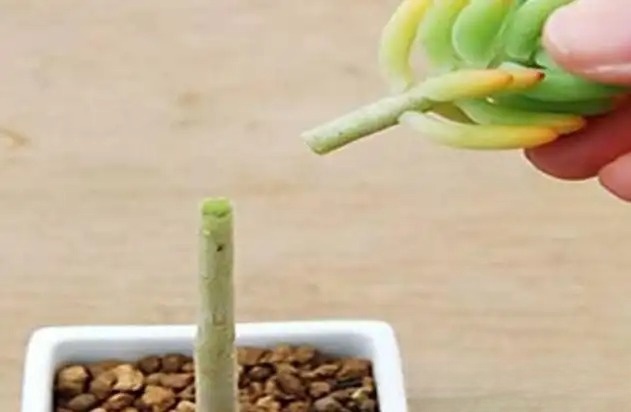 However, it is easier said than done. Cuttings are quite difficult and the succulents will wither and die easily and it is difficult for the small buds to emerge. So today the editor brings you the benefits of cuttings. If you learn these methods, the succulents cut by cuttings will quickly take root and sprout, greatly improving the survival rate.
However, it is easier said than done. Cuttings are quite difficult and the succulents will wither and die easily and it is difficult for the small buds to emerge. So today the editor brings you the benefits of cuttings. If you learn these methods, the succulents cut by cuttings will quickly take root and sprout, greatly improving the survival rate.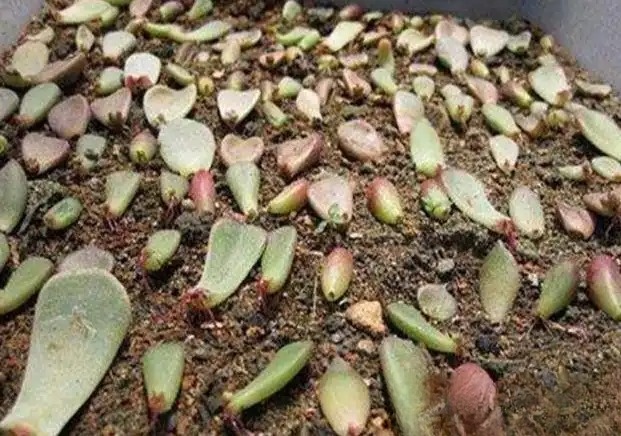 When we want to carry out succulent cuttings, we can use some tubers or buds for cuttings. Every spring, most succulents have grown more small tender buds. At this time, we can pick those newly grown side buds, take a sterilized blade, and then use carbendazim for sterilization to promote wound healing and avoid poor growth. It should also be noted that you must prepare a succulent plant with relatively strong growth and very thick leaves.
When we want to carry out succulent cuttings, we can use some tubers or buds for cuttings. Every spring, most succulents have grown more small tender buds. At this time, we can pick those newly grown side buds, take a sterilized blade, and then use carbendazim for sterilization to promote wound healing and avoid poor growth. It should also be noted that you must prepare a succulent plant with relatively strong growth and very thick leaves.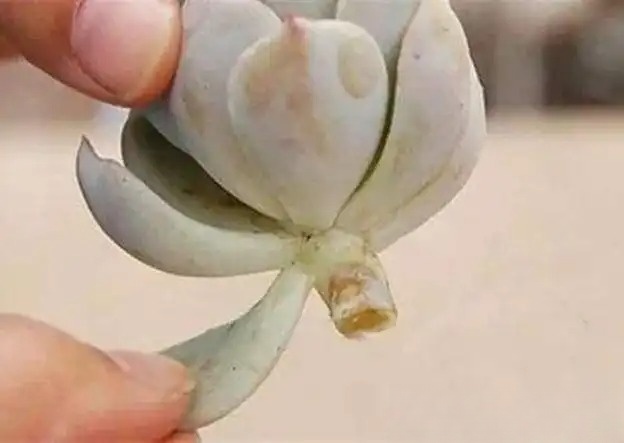 Of course, it should be noted that there must be no pests in the cut succulent buds. After cutting, you can put them in the soil for management. Roots will soon grow, and then they will be turned into potted plants for maintenance. The stems of the plants can also be trimmed and placed in a shady and damp place after cutting. This way, the wounds can recover faster. After recovery, they will become pots of petite and cute succulents.
Of course, it should be noted that there must be no pests in the cut succulent buds. After cutting, you can put them in the soil for management. Roots will soon grow, and then they will be turned into potted plants for maintenance. The stems of the plants can also be trimmed and placed in a shady and damp place after cutting. This way, the wounds can recover faster. After recovery, they will become pots of petite and cute succulents.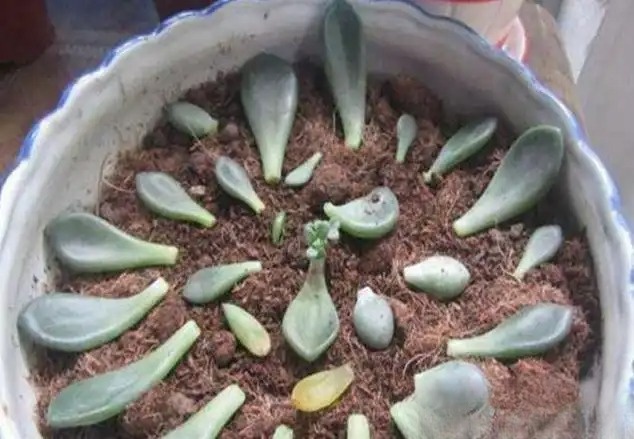 The seedbed for succulent cuttings must be breathable and loose to ensure that the cuttings have stronger growth. Generally, succulents can be added with water after 7 days, but be careful not to have too much light exposure. Pay attention to the moist soil environment of succulent cuttings. More reasonable maintenance and management can be carried out after 15 days. During this period, they must be placed in a relatively dark and very warm environment to avoid strong sunlight.
The seedbed for succulent cuttings must be breathable and loose to ensure that the cuttings have stronger growth. Generally, succulents can be added with water after 7 days, but be careful not to have too much light exposure. Pay attention to the moist soil environment of succulent cuttings. More reasonable maintenance and management can be carried out after 15 days. During this period, they must be placed in a relatively dark and very warm environment to avoid strong sunlight. Moreover, the leaves of many succulents have good germination ability, but we need to choose those leaves that are thick, strong and without spots. This can ensure that the survival rate will be greatly improved. We can quickly cultivate stronger plants. However, relying on this method, it is generally aimed at those plants that are hardy to maintain. If it is a plant that is not hardy to maintain, do not try it lightly.
Moreover, the leaves of many succulents have good germination ability, but we need to choose those leaves that are thick, strong and without spots. This can ensure that the survival rate will be greatly improved. We can quickly cultivate stronger plants. However, relying on this method, it is generally aimed at those plants that are hardy to maintain. If it is a plant that is not hardy to maintain, do not try it lightly.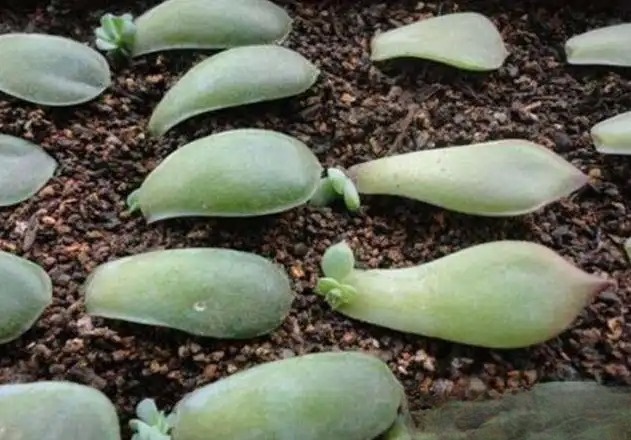 No matter what method we use for breeding, we must choose branches and leaves that are not affected by diseases. This can ensure a higher survival rate for the plants. Moreover, we must continue with cuttings only when the plants are alive, otherwise it will easily breed bacteria.
No matter what method we use for breeding, we must choose branches and leaves that are not affected by diseases. This can ensure a higher survival rate for the plants. Moreover, we must continue with cuttings only when the plants are alive, otherwise it will easily breed bacteria.There are many types of cutting propagation of succulents, such as the common leaf cuttings, stem cuttings or root cuttings.
Leaf cuttings
Leaf cuttings are a common method of propagating succulents. It is to use the sturdier leaves of succulents and directly insert them into loose soil, preferably sandy soil. After a period of time, small buds will grow at the base of the leaves. After about a week, you can plant them directly.
Normally, many flower lovers will prune their succulents and throw away some of the pruned branches and leaves. These stems and leaves must not be thrown away. Place these branches and leaves in a cool and humid place to dry, and then insert these stems and leaves into relatively loose soil. The effect will be particularly good.
There are also some succulents whose roots are very developed. At this time, you can use the root cutting method to propagate succulents. First, you need to cut off the fleshy roots and then bury them in the soil. However, you must pay attention to the soil must be relatively moist. Soon new buds will grow on the top of the roots.
It is also common to propagate succulents by sowing. The life span of succulents is not very long, but when propagating succulents by sowing, generally the new shoots of the well-growing succulents are directly picked and sown immediately, or sown in the spring of the second year. If you sow them later, the seeds will be reduced or die.
Grafting is also one of the commonly used propagation methods for succulents, such as grafting Spring Peak with Overlord Whip and grafting Dancing with Purslane. During the grafting process, you must pay attention to the fact that succulents contain a white latex with high viscosity. Therefore, when grafting, you must be quick or practice more maturely to successfully graft the succulents.
Division is the simplest and safest method of propagating succulents. Division can be carried out in spring. For example, Golden Edge Tiger Piranha, Princess Thunder God Brocade, Green Jade Fan Brocade, etc. are all propagated by division, because only by propagating by division can the purity of its variety be guaranteed.
What to do if the cuttings don't grow roots? Use these common things to make some rooting water
Cuttings are not only very cost-effective, but also very convenient. They are much faster than sowing. After all, you just need to put them in water or sandy soil, and they will grow roots in a few days. Transplanting them into a pot will create a brand new plant.
However, some flower lovers have encountered many problems in the process of cuttings, among which "no rooting" is the biggest problem. Sometimes after cutting a few branches and waiting, they finally found that the cuttings had rotted and did not take root. This is really disturbing.
Today Huahua will talk about some homemade methods of rooting water. You can make these extraordinary rooting waters using only some small household items, making it easier for everyone to take cuttings.
Everyone knows that aspirin is a common medicine. When taken by humans, it can relieve fever and pain, but when taken by flowers, it has another miraculous effect, which is to promote rooting and reduce root rot.
Because aspirin tablets contain some disinfecting and bactericidal substances, adding them to the water for cuttings can prevent the growth of bacteria, thereby providing a better growth environment for the cuttings and accelerating rooting.
After melting, shake it evenly and pour it into the sand and soil for cuttings. If it is water-cutting, just pour it directly into the water for cuttings.
Willow is a plant that can be seen everywhere. Many cities plant it as a greening tree in the streets and alleys. Although the catkins in spring are annoying, the fact that its branches can be used to make rooting water can strongly change the impression of it in the eyes of flower lovers~
You must have heard this saying - an unintentional planting of willows leads to a forest of willows, which clearly shows that it has strong and vigorous vitality.
Sometimes there will be landscaping workers pruning green plants on the roadside. You can pay more attention to them. After pruning, there will be some discarded branches, and you can pick some up and take them home.
Soak it for about two days, take out all the willow branches inside, and what is left is the rooting water. When cutting, just soak the lower part of the cuttings in this rooting water, and they will take root and sprout quickly.